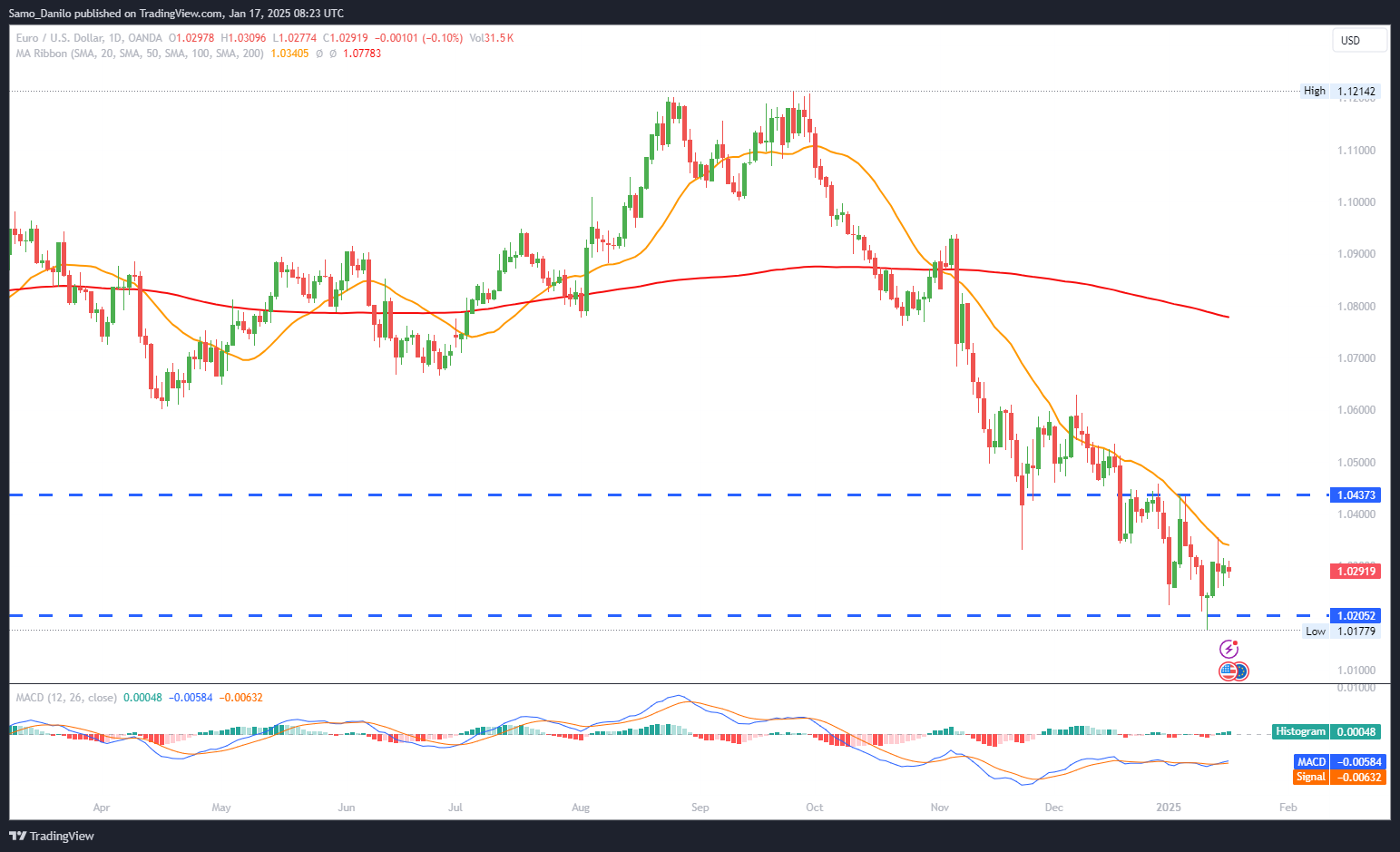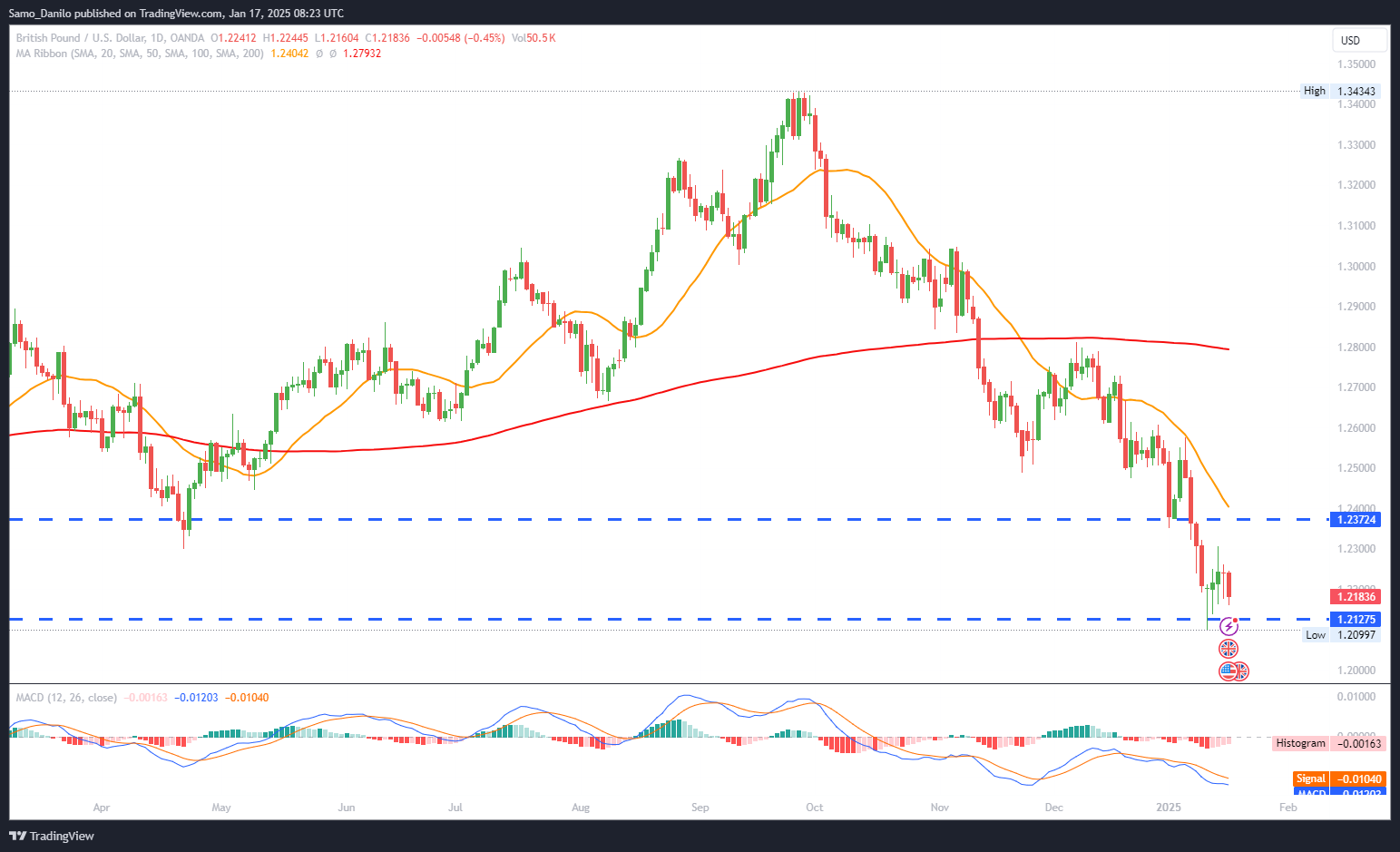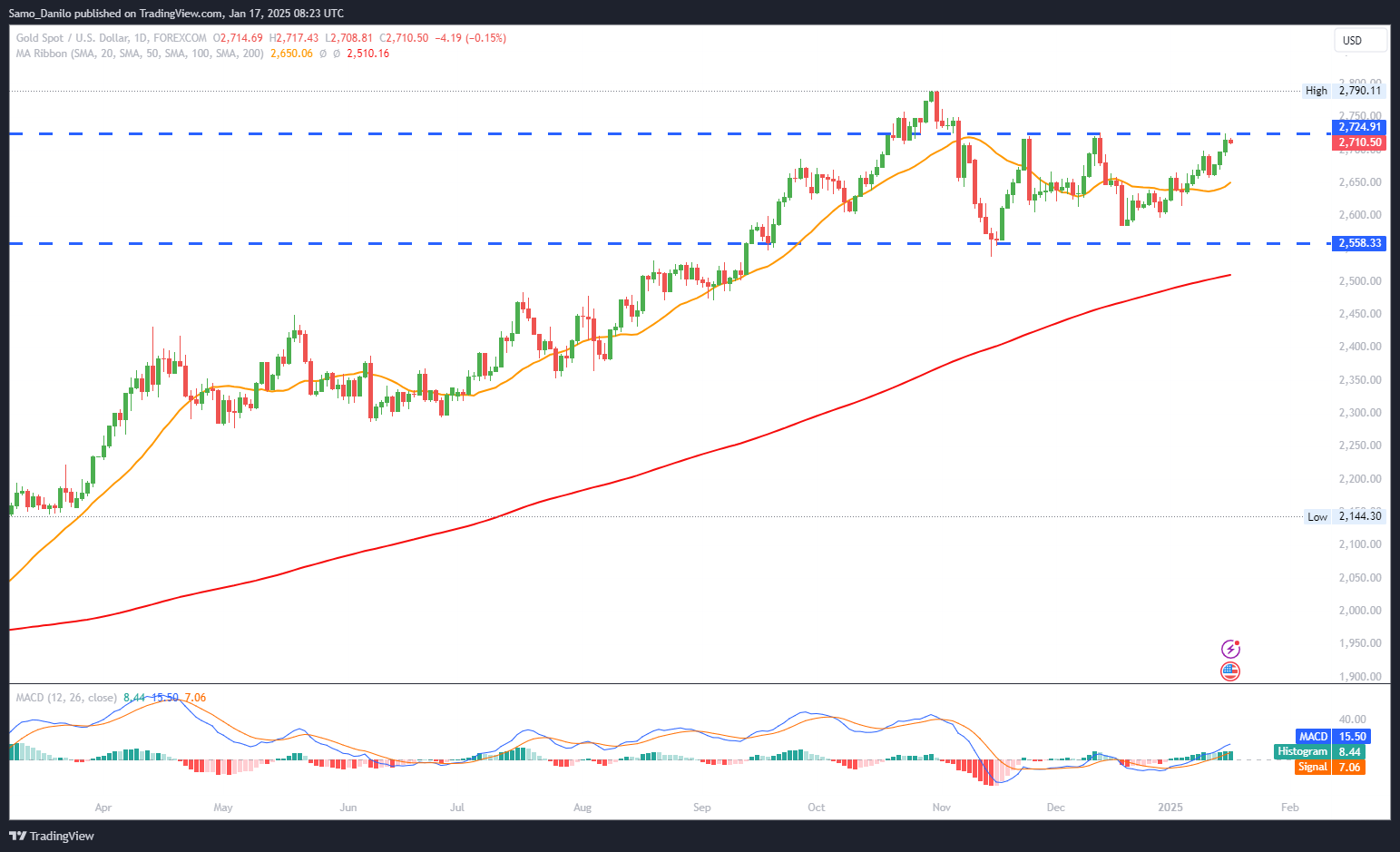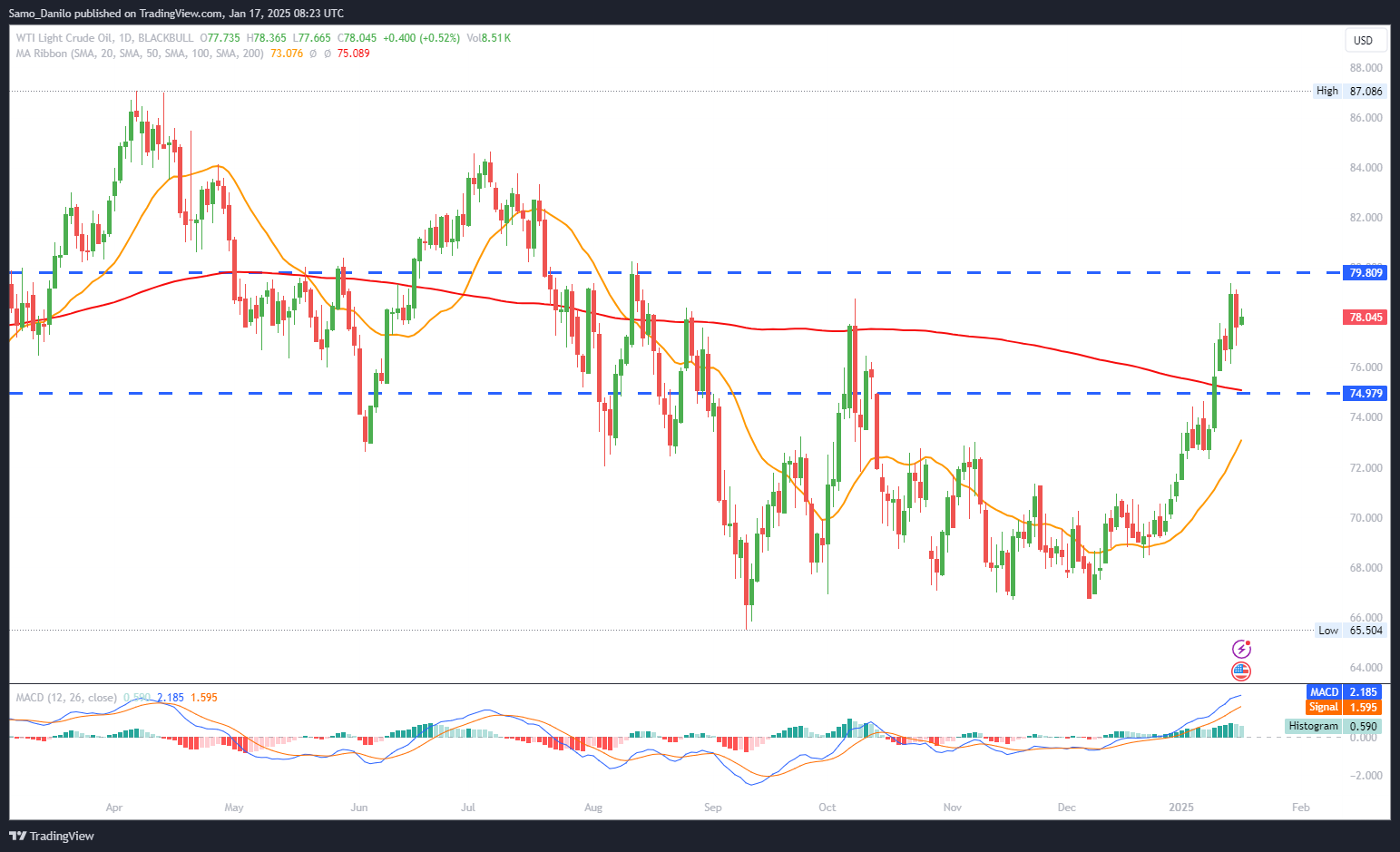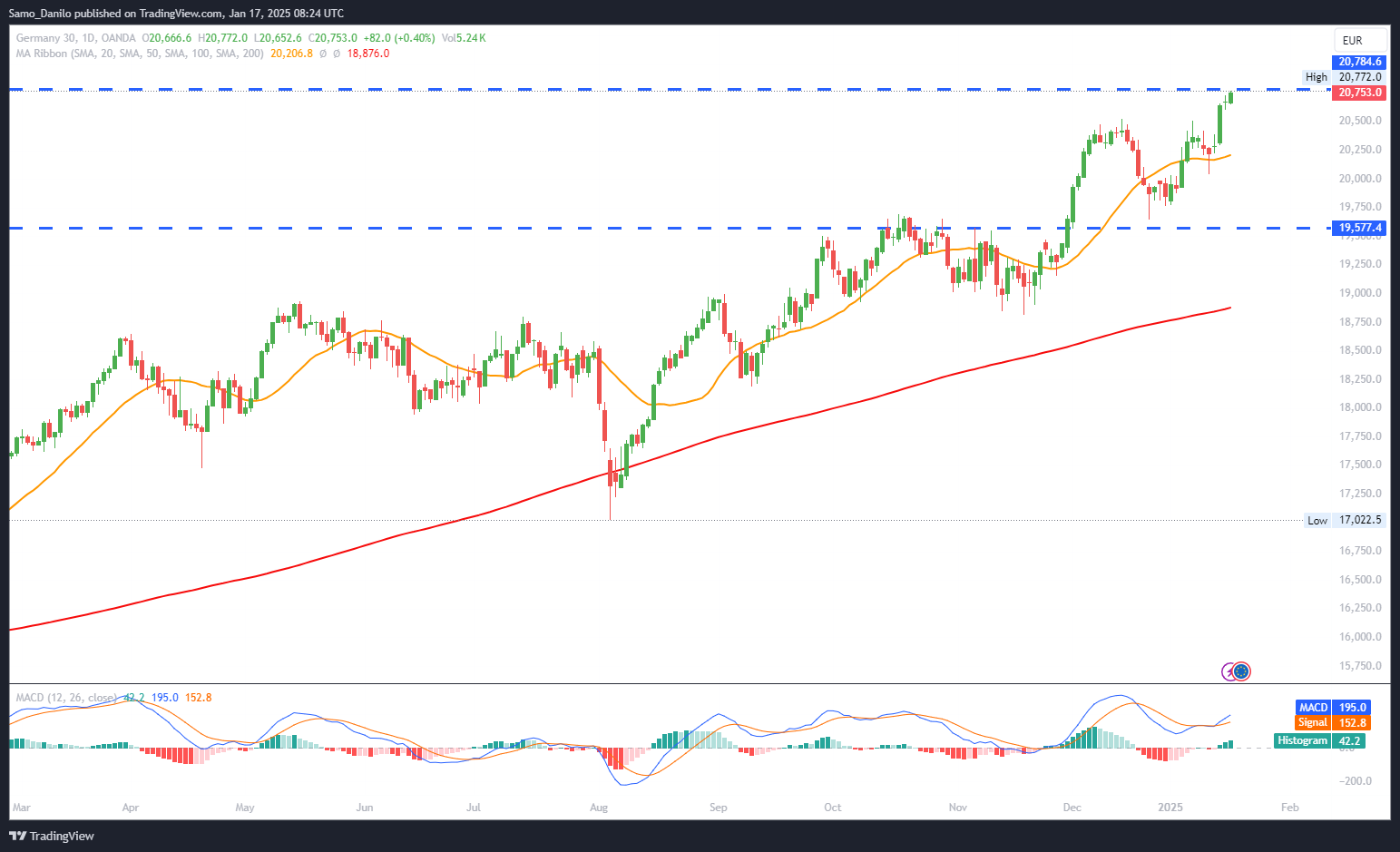EURUSD
- EUR/USD Price: The EUR/USD pair trades lower near 1.0300 in the early European session on Friday, pressured by market expectations of further rate cuts from the European Central Bank (ECB). The cautious stance on monetary easing by ECB policymakers adds to bearish sentiment for the Euro.
- ECB Minutes: The ECB Monetary Policy Meeting Accounts, released on Thursday, revealed consensus among policymakers to adopt a cautious and gradual approach to interest rate reductions. Despite this, the possibility of additional rate cuts remains firmly on the table, with markets fully pricing in a 25-basis-point cut at the January 30 meeting.
- ECB Members: ECB Governing Council member Yannis Stournaras reiterated on Thursday that the central bank should proceed with a series of rate cuts in upcoming meetings. Such comments have further fueled expectations of a prolonged period of accommodative monetary policy, keeping the Euro under pressure.
- Eurozone Economic Data: Investors await key Eurozone economic indicators, including the Current Account figures and the Harmonized Index of Consumer Prices (HICP), set to be released later on Friday. These data points will provide additional insights into the region’s economic health and inflation dynamics.
- ECB Speeches: ECB board member Piero Cipollone is scheduled to speak on Friday, which could offer additional clarity on the central bank's policy outlook. Markets will closely monitor his remarks for hints regarding the trajectory of future rate decisions.
Closing statement: EUR/USD remains under bearish pressure amid rising expectations for further ECB rate cuts. Market participants should focus on upcoming Eurozone data and ECB commentary for potential catalysts. A break below 1.0300 could signal further downside momentum, while any signs of economic resilience may offer temporary support.
GBPUSD
- GBP/USD Price: The GBP/USD pair faces fresh selling pressure in Friday's European trading session, falling below the 1.2200 mark. The bearish momentum is driven by disappointing UK economic data and a broader risk-off sentiment impacting the British Pound.
- UK Retail Sales: The UK Retail Sales fell by 0.3% in December, contrasting with November's 0.2% growth, as reported by the Office for National Statistics (ONS).
- UK GDP: UK GDP growth rebounded slightly in November with a 0.1% month-on-month increase, missing market expectations of 0.2% and reflecting ongoing economic fragility.
- US Retail Sales: On the US side, December Retail Sales figures showed a moderation, rising 0.4% month-on-month. While better than expected, this marks a decline from the revised 0.8% growth in November, weighing on broader risk sentiment yet providing some support for the US Dollar.
- Technical Analysis: GBP/USD continues to trade within a descending channel pattern on the daily chart, reinforcing its bearish outlook. With key resistance levels remaining intact, the pair appears poised for further declines unless significant upside catalysts emerge.
Closing statement: GBP/USD remains under pressure amid weak UK economic data and persistent bearish technical signals. Unless data surprises to the upside or risk sentiment improves, the pair may continue its descent, potentially targeting lower support levels near 1.2150.
XAUUSD
- Gold Price: XAU/USD edges lower on Friday, snapping a three-day winning streak that pushed it to a one-month high near the $2,724-2,725 region. Profit-taking and a lack of fresh bullish catalysts contribute to the pullback in the precious metal.
- China GDP: China’s Q4 2024 GDP growth came in at 5.4% year-over-year, surpassing estimates of 5% and the previous reading of 4.6%. However, the robust economic data from China failed to inspire gold prices, likely due to subdued safe-haven demand amidst risk-on sentiment.
- US Data: US economic data released on Thursday painted a mixed picture. Retail Sales showed moderation, while Initial Jobless Claims unexpectedly rose to 217,000, missing expectations of 210,000. This reinforced market expectations of potential Federal Reserve rate cuts in the first half of 2025.
- Fed Commentary: Comments from Fed Governor Christopher Waller further weighed on US Treasury yields and the US Dollar. Waller noted that if inflation continues to decelerate, rate cuts could be a possibility in the near term, reducing the opportunity cost of holding non-yielding gold.
- Key Data: Gold traders now turn their focus to upcoming US housing and industrial production data for fresh trading cues. These mid-tier economic indicators could influence market sentiment and provide additional direction for XAU/USD in the near term.
Closing statement: Gold prices are facing a temporary pullback after recent gains, with traders digesting mixed economic signals and dovish Fed commentary. While further rate cut expectations support the broader outlook for gold, immediate focus remains on upcoming US data, with strong readings potentially capping XAU/USD’s upside near the $2,725 level.
CRUDE OIL
- WTI Price: WTI crude oil prices edged lower as reports emerged of a potential halt to Houthi shipping attacks in the Red Sea, following the ceasefire agreement in Gaza between Israel and Hamas. The easing of geopolitical tensions reduced immediate supply disruption concerns.
- US Retail Sales: Data from the US Commerce Department revealed an increase in December Retail Sales, highlighting resilient consumer demand. The robust economic activity could provide a bullish backdrop for crude demand in the short term.
- IEA Report: The International Energy Agency (IEA) warned of possible supply disruptions due to recent US sanctions targeting Russia’s energy sector. The agency also raised its global demand forecast, citing colder weather conditions across the northern hemisphere as a contributing factor.
- OPEC Report: OPEC’s monthly report kept its 2025 demand growth estimate unchanged at 1.45 million barrels per day (b/d) year-on-year. For 2026, the group projected demand growth of 1.43 million b/d, reflecting a stable medium-term outlook.
- Festive Travel: Analysts predict a short-term increase in oil consumption by 1.4 million bpd, fueled by heightened travel activity during India’s festivals and Lunar New Year celebrations in China. This seasonal demand spike is expected to provide near-term support for crude oil prices
Closing statement: WTI prices remain under pressure from easing geopolitical risks, but strong global demand, driven by festive travel and colder weather, offers a supportive backdrop. The focus now shifts to potential supply disruptions and updated economic data for further price direction.
DAX
- DAX Price: The DAX gained 0.39% on Thursday, extending its rally from Wednesday’s 1.50% surge to close at 20,655. During the session, the index reached a record high of 20,675 before retracing slightly, reflecting strong investor confidence.
- German Inflation: Germany's annual inflation rate increased from 2.2% in November to 2.6% in December. This uptick in inflation raised doubts about the likelihood of multiple European Central Bank (ECB) rate cuts, applying downward pressure on the DAX.
- Eurozone Inflation Data: Finalized Eurozone inflation figures showed a rise in the annual inflation rate from 2.2% in November to 2.4% in December. These figures could further influence market expectations regarding the ECB's monetary policy and its impact on equity valuations.
- ECB Commentary: The ECB’s interest rate decisions remain a critical factor for corporate earnings and market valuations. Investors are closely monitoring ECB statements for clues about future rate paths and how the central bank plans to address inflationary pressures.
- US Housing Data: In the US session on Friday, housing sector data became a focal point, as economists regard the sector as a key indicator of overall economic health. Its performance could influence global market sentiment, including European equities.
Closing statement: The DAX maintains a strong bullish trend but faces headwinds from rising inflation and uncertainty around ECB rate cuts. Investors should watch Eurozone inflation data and ECB signals closely for further insights into market direction. Global economic indicators, such as US housing data, also remain important for shaping sentiment.
